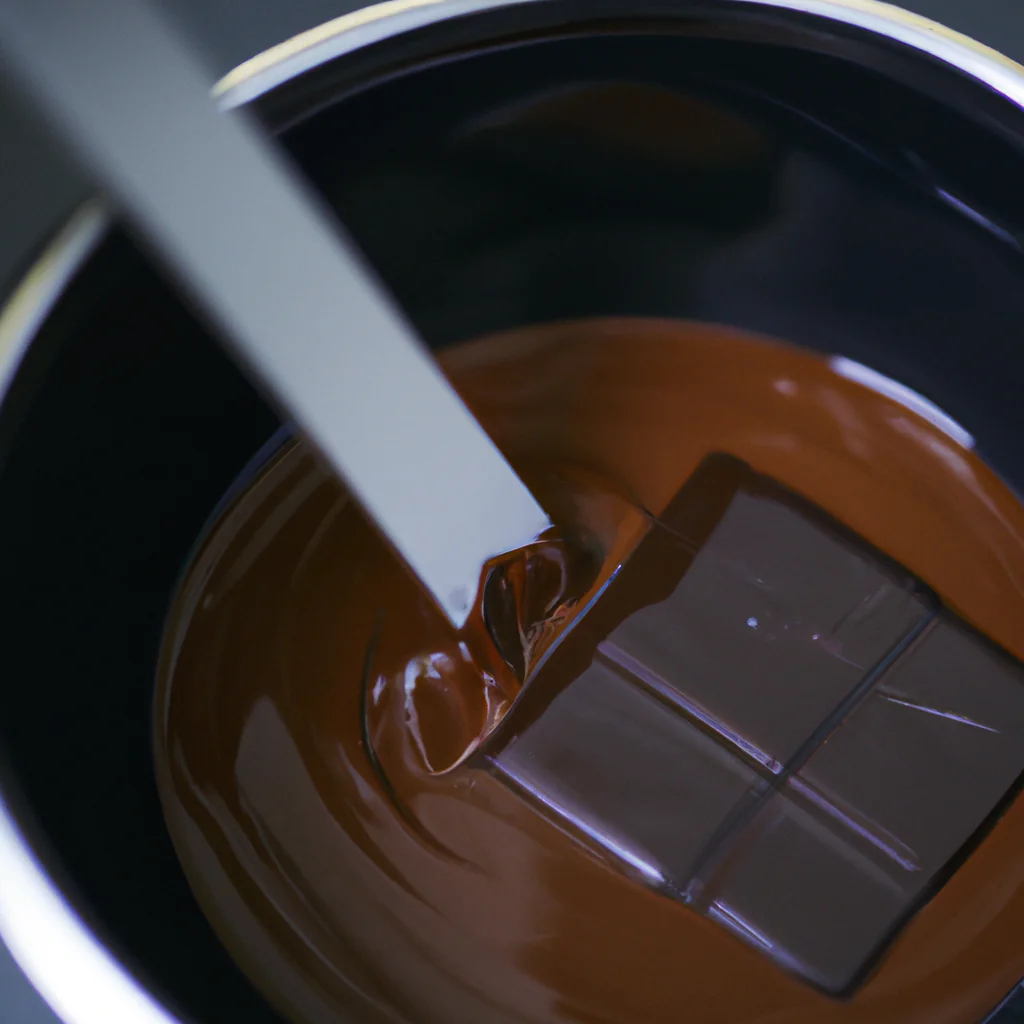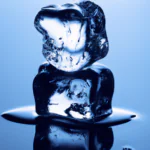When you think of chocolate, you think of sweetness, indulgence, and maybe a little romance. But what about melting? Chocolate is well-known for having temperamental melting properties — so much so that it is a symbol for fragility. But why does chocolate melt at different temperatures?
In this article, we will explore the science behind chocolate melting and the temperature at which it begins melting. We’ll also look at what makes chocolate melt faster and the different types of chocolate that have different melting properties. Read on to learn more about this sweet and temperamental treat!
Table of Contents
What Temperature Does Chocolate Melt?
Chocolate comes in various forms, from dark to milk and white – and each type requires different temperatures for optimal melting results. If you’re wanting to find out exactly what temperatures are ideal for each type of chocolate, you should read on.
For dark chocolate, the perfect melting temperature is between 120 and 130°F (50°C and 55°C). On the other hand, milk and white chocolate require a lower melting temperature between 105-115°F (40-45°C).
When melting chocolate, it’s best to use either a double boiler or a microwave – both of which will help maintain the perfect temperature. If you are using a double boiler, consider adding a thermometer as this will allow you to monitor and adjust the temperature as necessary.
But getting the most out of your melted chocolate goes beyond just achieving the right temperature. The length of time you have your melted chocolate at that temperature can also affect its quality and taste! Too much exposure to heat may produce an unpleasant taste.
How To Ensure Smooth Melting
There are several measures you can take to ensure that you get perfectly melted chocolate with every attempt:
- Use a thermometer to ensure that all chocolates have been melted at their designated temperatures.
- Stir your chocolates regularly while they are on heat.
- Keep an eye on how long your chocolates have been melted; the longer they stay at their desired temperatures, the more likely they are to lose their flavor or texture.
- If using a microwave oven, use short bursts of power instead of one long blast.
Melting chocolate at the exact right temperatures can make or break your dessert. With these simple tips, you can be sure that your chocolates will be melted perfectly every time!
What’s the Temperature For Melting Chocolate?
Chocolate begins to melt at temperatures between 86°F and 90°F. Chocolate is a commonly used ingredient for baking, cooking, and even a sweet snack. When chocolate melts, it can be used as a glossy, shiny topping for cakes and other desserts.
When creating chocolate recipes, the chocolate’s melting point must be considered to ensure that the desired result is achieved. It’s important to know how to heat properly and cool chocolate so that the desired texture and flavor is produced.
If chocolate is heated too quickly or above its maximum melting point, it will burn and turn into a grainy texture. As chocolate burns, it will produce an unappealing flavor that no one wants in their dessert!
There are a few simple methods to heat and melt chocolate appropriately. Here’s what you need to know:
- In the microwave: Start by heating the chocolate in short intervals of 15-30 seconds intervals. Stir in between each interval until the desired temperature is achieved.
- On the stove: Place the chocolate in a double boiler over medium-low heat. Stir frequently until the desired temperature is reached.
- In a hot water bath: Fill a medium-sized saucepan with about two inches of warm water. Place the saucepan over low heat on the stove and stir frequently until melted.
To ensure that your chocolate is melted properly without burning or scorching, use either a thermometer or keep a close eye on it throughout heating process. Chocolate should not be heated above 92°F. Once you reach your desired temperature, please remove it from its heating source immediately!

Chocolate’s Melting Point: Is 72 Degrees Hot Enough?
We all know that chocolate is a delicacy that should be handled with care. But did you know that your home’s temperature can actually cause your beloved chocolate to start melting? If you’re wondering if your room’s temperature is too high for your chocolate to survive, the answer, unfortunately is probably yes.
Chocolate begins to melt around 72 degrees Fahrenheit. So, if you’re located in a climate that sees temperatures above that on a regular basis, it’s always best to store your chocolate somewhere cool and dry like a refrigerator or pantry.
However, if you plan on eating the chocolate right away, then there are ways to keep it solid longer.
- Encase it in foil or parchment paper.
- Keep it out of direct sunlight.
- Store it in an airtight container.
Of course, if you can’t find any way to escape the heat and humidity of summer, there are still ways to indulge in your favorite chocolates. Simply opt for products that are already melted into creamy and delectable treats like hot chocolate or ganache!
Knowing these tips can help keep your chocolate safe from extreme temperatures – no matter where you live or what time of year it is.
83 Degrees and Rising: Will Chocolate Still Melt?
When it comes to chocolate, it’s essential to remember one thing: heat affects the texture and flavor of chocolate, so controlling the temperature is key.
Melting chocolate is a process called tempering. The ideal temperature for chocolate tempering is 70°F. However, it’s noteworthy that the first type of crystal in chocolate starts to break down above 82 °F, meaning that temperatures exceeding this may cause your chocolate to melt.
Keep your chocolate below 80°F for the best results, or you might risk melting the chocolate’s components and losing its great taste!
Can your precious little bar of chocolate survive a room at 78°F?
Well, while 78°F may not be considered ideal, you can be relieved knowing that your chances of melted chocolate are slim at such a temperature. The only thing left to do is make sure that you take precautionary measures—like using a thermometer—to ensure that your tasty treat doesn’t get too hot!
Tips to Make Sure Your Chocolate Stays Solid:
- Avoid direct sunlight.
- Don’t keep your chocolates near heat-producing appliances or cookers.
- Check temperatures with a thermometer.
- Don’t leave chocolates out for too long — wrap them before they warm up.
Will 90 Degrees Make Chocolate Run Away?
Cocoa butter, an integral part of chocolate, has a melting point of around 93°F (34°C), which means that it will start to melt at body temperature and above. When temperatures rise, will your chocolate bars hold up? Here’s an overview of how cocoa butter and chocolate react to heat.
Cocoa Butter Melts at 93°F
Cocoa butter is the fat extracted from cocoa beans that is used to make chocolate. It’s designed to help give chocolate its signature smooth and creamy texture. Without cocoa butter, many chocolates would be dry and crumbly. And chocolate’s signature melt-in-your-mouth feel comes from the cocoa butter melting in your mouth.
The melting point of cocoa butter is its most important feature. For most applications, it melts around 93°F (34°C). It retains its solid form up this temperature, but once it reaches or surpasses this temperature, the cocoa butter melts.
Chocolate Has a Lower Melting Point
Surprisingly, the melting point of chocolate itself is lower than that of cocoa butter—about 90°F (or 32°C). Depending on the formulation of the recipe, some chocolates may have higher melting points than others, but they all remain solid at temperatures well below 93°F.
What Does This Mean for Summer Temperatures?
- Chocolate bars won’t necessarily melt if summer temperatures reach over 90℉.
- They may start to soften or discolor due to the high heat.
- It’s best to keep chocolates away from windowsills or other places where direct sunlight can hit them.
- When transporting them in hot weather, you may want to keep them refrigerated or frozen until ready for use.
Understanding melting points can help when choosing right dessert for hot summer days. Cocoa butter has the highest melting point among the components of a truffle or bar of chocolate, so keeping it cool ensures longer-lasting fun in its consumption. Now you know what you need to beat the heat—keep your chocolates cool!
Making Melts Quicker: Uncovering the Mysteries of Chocolate Dissolution
One of the first things we notice when biting into melted chocolate is how smooth and creamy it feels. But what causes chocolate to melt in the first place? A key ingredient, cocoa butter or cocoa fat, is a key factor in determining how quickly a particular chocolate will melt.
The higher the content of cocoa butter or fat, the faster a chocolate will melt. This is why dark chocolate, which contains higher amounts of cocoa butter or fat compared to milk chocolates, tends to melt much faster.
In addition to cocoa butter/fat, other properties such as temperature and size also play a role in melting speed. The warmer the temperature of your environment, the quicker the chocolate will melt. If your chocolate morsel is small, this, too, contributes to easier melting.
Another variable that changes melting speed significantly is the structure of the cocoa particles. The larger the surface area of your chocolate particle, the quicker it will melt – even if it has the same amount of cocoa butter/fat as a chunkier one.
- Cocoa butter/fat
- Size/shape
- Temperature
- Structure of particle
The four main factors above can all determine how fast a particular type of chocolate melts. Next time you indulge in an at-home treat or buy a box of chocolates, take note of these variables!




